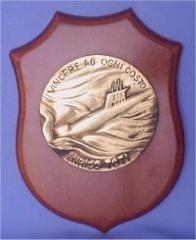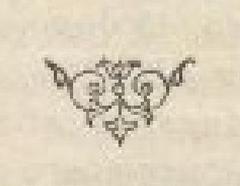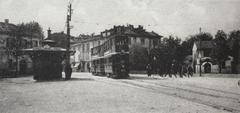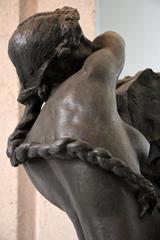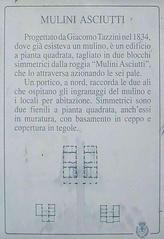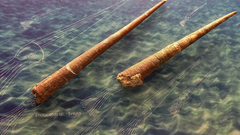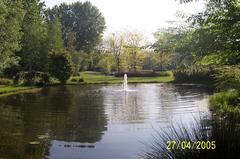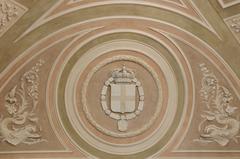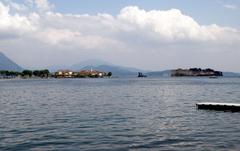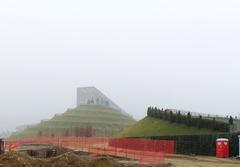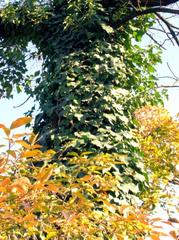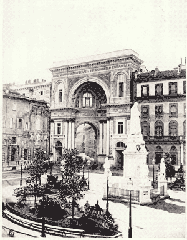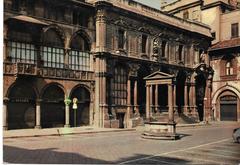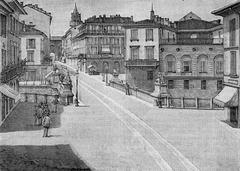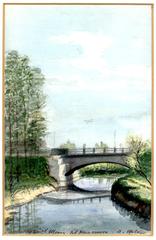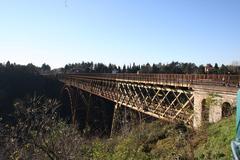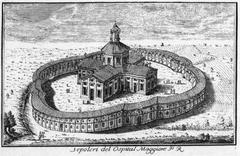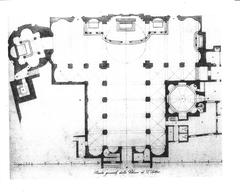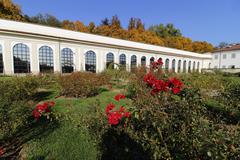Visiting Ponte Vecchio in Florence: History, Significance, Visitor Tips, and Essential Information
Date: 01/08/2024
Introduction
The Ponte Vecchio, or ‘Old Bridge,’ stands as an enduring symbol of Florence, Italy, captivating millions of visitors each year with its rich history, stunning architecture, and vibrant commercial activity. This medieval stone bridge, which spans the Arno River, is not just a marvel of engineering but also a living testament to the city’s historical and cultural evolution. Built during Roman times and reconstructed in the 14th century, the Ponte Vecchio has been a crucial part of Florence’s urban fabric, serving as a key crossing point and commercial hub. Over the centuries, it has witnessed numerous transformations, from its medieval role in facilitating trade to its Renaissance facelift under the Medici family, who commissioned the iconic Vasari Corridor (Wikipedia, History Hit). Today, the bridge is renowned for its unique blend of historical significance and modern-day allure, featuring a plethora of jewelry shops and art boutiques that attract tourists from around the world (Visit Florence). This comprehensive guide aims to provide you with all the essential information for a memorable visit to the Ponte Vecchio, including its historical background, visitor tips, and nearby attractions.
Table of Contents
- Introduction
- Historical Background
- Visitor Information
- Nearby Attractions
- Special Events and Guided Tours
- Photographic Spots
- FAQ
- Conclusion
Historical Background
Origins and Early History
The Ponte Vecchio dates back to Roman times, making it one of the earliest crossings of the Arno River. The first bridge on this site was built during the Roman era, and over the centuries, it has undergone several reconstructions due to natural disasters such as floods. The current structure, dating from approximately 1339-1345, was designed by the architect Taddeo Gaddi, though some modern historians suggest Neri di Fioravanti as a possible candidate for its construction (Wikipedia).
Medieval Significance
During the medieval period, the Ponte Vecchio played a crucial role in Florence’s urban and economic life. It connected the Roman Florentia with the Via Cassia Nova, facilitating trade and movement within the city. The bridge has always hosted shops and merchants who displayed their goods on tables before their premises, authorized by the Bargello, a sort of lord mayor, magistrate, and police authority (Wikipedia).
Renaissance Transformations
In 1565, Cosimo I de’ Medici commissioned Giorgio Vasari to build the Vasari Corridor, a covered passageway running above the Ponte Vecchio. This corridor connected the Palazzo Vecchio with the Palazzo Pitti, allowing the Medici family to move freely and safely between their residence and government offices without mingling with the public (History Hit). In the same year, a decree was issued to enhance the bridge’s prestige and cleanliness by excluding butchers from occupying the shops, allowing only goldsmiths and jewelers to set up businesses there. This marked a significant transformation in the bridge’s commercial landscape (Wikipedia).
17th Century Additions
The 17th century saw further modifications to the Ponte Vecchio. Back shops, known as retrobotteghe, were added to the bridge, extending the commercial space for merchants. These additions contribute to the bridge’s unique architectural appearance (Wikipedia).
World War II and Preservation
The Ponte Vecchio holds a unique place in World War II history. During the German retreat in 1944, the Nazis destroyed all the bridges in Florence except for the Ponte Vecchio. According to local legend, Adolf Hitler forbade its destruction due to its historical significance. However, access to the bridge was obstructed by the destruction of the buildings at both ends, which have since been rebuilt using a combination of original and modern designs (Wikipedia, History Hit).
Modern Era and Cultural Impact
In the 20th century, the Ponte Vecchio continued to be a focal point in Florence. In 1900, to honor the fourth centenary of the birth of the great Florentine sculptor Benvenuto Cellini, the leading goldsmiths of the bridge commissioned the sculptor Raffaello Romanelli to create a bronze bust of Cellini. This bust stands atop a fountain in the middle of the eastern side of the bridge today (Wikipedia). Today, the bridge is closed to vehicular traffic but remains a bustling pedestrian thoroughfare, connecting important tourist sites such as Piazza del Duomo, Piazza della Signoria, Palazzo Pitti, and Santo Spirito. It is also listed as a national artistic heritage site by the General Directorate of Antiquities and Fine Arts (Wikipedia).
Cultural and Literary References
The Ponte Vecchio has found its place in cultural and literary history. A stone with an inscription from Dante’s ‘Paradiso’ (xvi. 140-7) marks the spot at the entrance to the bridge where Buondelmonte de’ Buondelmonti was murdered by the Amidei clan in 1215, sparking the conflict between the Guelfs and Ghibellines (Wikipedia).
Visitor Information
Opening Hours and Ticket Prices
The Ponte Vecchio is open to pedestrians 24/7, and there is no fee to cross the bridge. However, some of the shops and attractions on the bridge have specific opening hours. It’s advisable to check individual shop timings if you plan to visit them.
Accessibility
The Ponte Vecchio is accessible to pedestrians, including those with mobility impairments. However, it is worth noting that the bridge can become quite crowded, particularly during peak tourist seasons.
Travel Tips
- Best Time to Visit: Early morning or late afternoon to avoid the crowds.
- Photography: Capture stunning views of the bridge from the banks of the Arno River, particularly at sunset.
- Shopping: Explore the unique jewelry shops that line the bridge for some exquisite souvenirs.
- Guided Tours: Consider booking a guided tour to learn more about the bridge’s history and significance.
Nearby Attractions
- Piazza del Duomo: Home to the Florence Cathedral, Giotto’s Campanile, and the Baptistery of St. John.
- Piazza della Signoria: A historic square featuring the Palazzo Vecchio and the Loggia dei Lanzi.
- Palazzo Pitti: A vast Renaissance palace that now houses several important museums.
- Santo Spirito: A lively neighborhood known for its vibrant markets and artisan workshops.
Special Events and Guided Tours
The Ponte Vecchio hosts various special events throughout the year, including art exhibitions and cultural festivals. Check local listings and tourism websites for up-to-date information. Guided tours are also available, offering in-depth insights into the bridge’s history and significance.
Photographic Spots
- From the Arno Riverbank: Capture panoramic views of the bridge from both sides of the river.
- Vasari Corridor: If accessible, the corridor offers unique perspectives of the bridge and the city.
- Mid-Bridge: The center of the bridge provides excellent photo opportunities of the shops and the river.
FAQ
Q: What is the best time to visit the Ponte Vecchio? A: Early morning or late afternoon is the best time to visit to avoid the crowds and capture beautiful photographs.
Q: Are there any guided tours available? A: Yes, several guided tours focus on the history and significance of the Ponte Vecchio and other nearby attractions.
Q: Is the Ponte Vecchio accessible for people with disabilities? A: Yes, the bridge is accessible to pedestrians, including those with mobility impairments, though it can be crowded.
Q: Are there any fees to visit the Ponte Vecchio? A: No, there is no fee to cross the bridge, but individual shops and attractions may have their own pricing.
Conclusion
The Ponte Vecchio is far more than just a bridge; it is a vibrant emblem of Florence’s rich history, architectural ingenuity, and cultural heritage. From its origins in Roman times to its medieval and Renaissance transformations, the bridge has continuously evolved while maintaining its unique charm and significance. Today, it stands as a bustling pedestrian thoroughfare, connecting key tourist sites and offering visitors a unique shopping experience with its array of goldsmiths and jewelers (Wikipedia, Visit Florence). Whether you’re capturing panoramic views from the Arno Riverbanks or exploring the historical Vasari Corridor, the Ponte Vecchio offers a myriad of experiences that cater to history enthusiasts, photographers, and casual tourists alike. As you plan your visit, consider the travel tips and nearby attractions mentioned in this guide to enrich your journey through this timeless landmark. For more travel insights and updates, be sure to explore our other posts and follow us on social media.
References
- Wikipedia. (n.d.). Ponte Vecchio. Retrieved from Wikipedia
- History Hit. (n.d.). Ponte Vecchio. Retrieved from History Hit
- Visit Florence. (n.d.). Ponte Vecchio. Retrieved from Visit Florence
- Britannica. (n.d.). Ponte Vecchio. Retrieved from Britannica
- My Florence Pass. (n.d.). Ponte Vecchio. Retrieved from My Florence Pass
- TripSavvy. (n.d.). The Ponte Vecchio. Retrieved from TripSavvy
- The Better Vacation. (n.d.). Ponte Vecchio Bridge. Retrieved from The Better Vacation
- Florence with Locals. (n.d.). The Ponte Vecchio Florence: Everything You Need to Know. Retrieved from Florence with Locals
- Travel in Culture. (n.d.). Florence Itinerary: Ponte Vecchio. Retrieved from Travel in Culture



